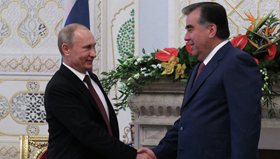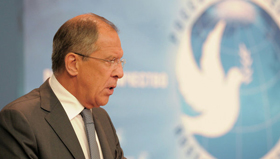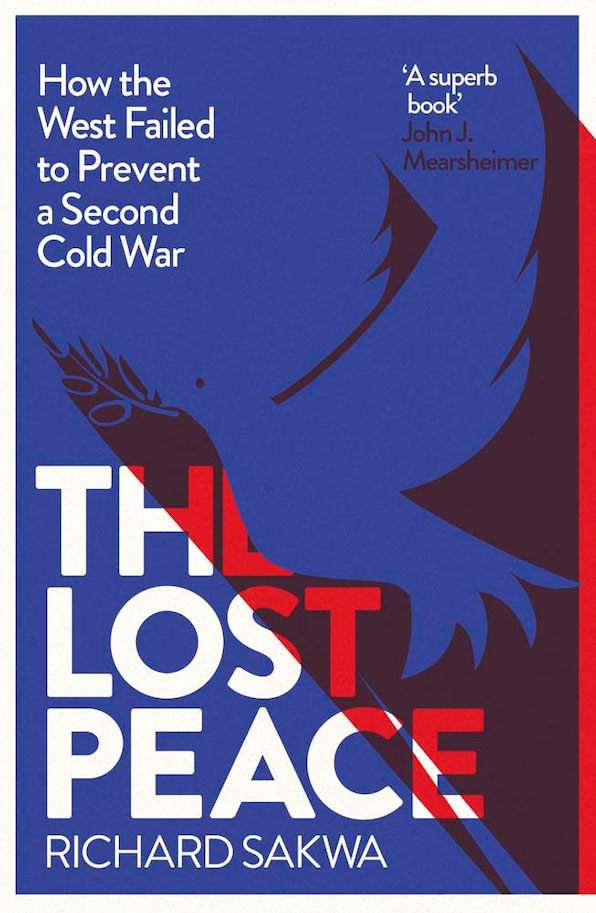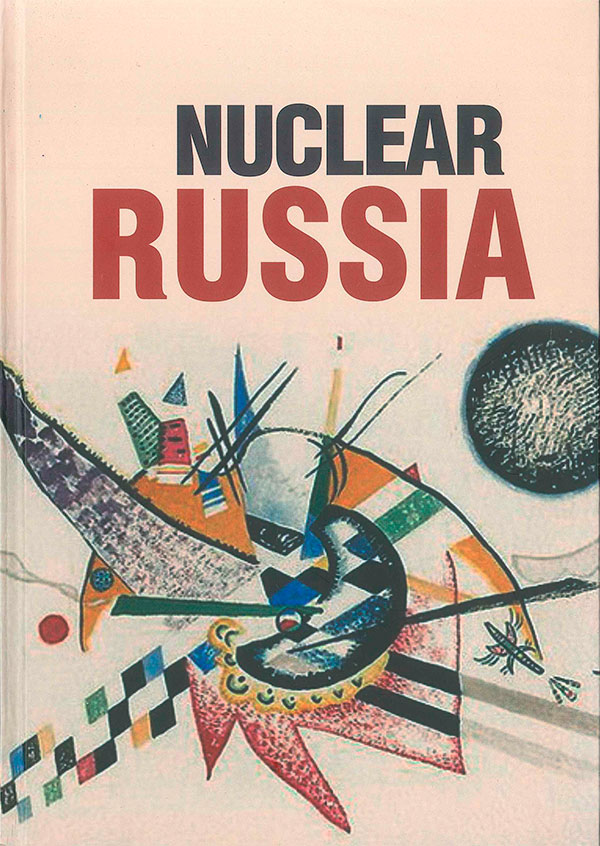Development Assistance As Leverage for Russia’s Footprint in Kyrgyzstan and Tajikistan
In
Login if you are already registered
(no votes) |
(0 votes) |
Ph.D. (History), Professor, Institute for Advanced Strategic Studies, HSE University, RIAC Expert
Ph.D. (Engineering), President Eurasia Heritage Foundation
This article will first analyze the efficiency of Russian IDA in Central Asia as a means of ensuring the promotion of its national interests, and then highlight several recommendations on how to upgrade the quality of this leverage, which is an essential part of soft power projection.
Vladimir Putin’s visits to Bishkek and Dushanbe (September 20, and October 5, 2012 respectively) have markedly enhanced Russia’s footprint in Central Asia and served as testimony to the fact that the Russian Federation’s leadership has come to realize how interdependent the two issues of security and development are.
The establishment of a military base in Kyrgyzstan is being supported by cooperation in the energy field and by writing off Kyrgyzstan’s debt. Similarly, the prolongation of the agreement on the 201st military base in Tajikistan is supported by assistance in fighting drug trafficking, softening the terms and conditions for labor migrants’ entry to Russia, and subsidized supplies of Russian fuel, gas and lubricants. Could all these facts point to the conclusion that International Development Assistance (IDA) in a region that is highly important to Russia has moved up a level on the priority scale?
This article will first analyze the efficiency of Russian IDA in Central Asia as a means of ensuring the promotion of its national interests, and then highlight several recommendations on how to upgrade the quality of this leverage, which is an essential part of soft power projection.
Do Ut Des, or the Science of Assistance
In the first decade of the 2000s, the issue of IDA efficiency, assessed by the criteria of whether recipient nations achieve their development goals through this assistance, moved to the forefront of the global agenda. The Paris Declaration in 2005, put forward a vision of how to tackle this problem, spelling out five principles that would boost IDA efficiency: giving the recipient full control over the assistance; harmonization; coherence; mutual accountability; and results-based management. The indicators as to whether or not these goals have been achieved become in themselves the “proof of excellence” of the efforts dedicated to facilitating development in the XXI century.
However, assisting in another nation’s development is just one of the elements that motivates the donor nation, the other motivations being political, strategic, commercial, and image-building considerations. The difference in priority between these various aspects of motivation determines the donor’s “generosity” (calculated as a percentage of its GDP), the IDA’s structural model, IDA management, how IDA is distributed between regions, sectors, also formats and channels of IDA. The “Do ut des” principle is on par with the moral imperative: “by helping others, you help yourself,” irrespective of the IDA’s final goal.
These days, even traditional philanthropy tends to be assessed in terms of efficiency. However, IDA is not limited to simple altruism, since it also acts as leverage to stimulate changes in the recipient nation’s socio-economic system and sometimes even in its political system. This is a science in its own right, with algorithms and procedures that factor in spontaneity and a creative approach but not at the expense of scrupulously planned and consistent actions.
Yet, since IDA resources are a drain on the donor nation, it is essential to assess the efficiency of the assistance offered in terms of promoting the donor’s national interests and how efficiently the IDA is managed. Targeted assistance is a guarantee of efficiency but not a panacea.
One of the key criteria of effective IDA management involves the following: financial, administrative and human resources, as well as channels, forms and tools of assistance are adequate to the goals. This adequacy can be established empirically, but under these new circumstances, as “new” donors have come to the “IDA market” heightening competition, this method is counterproductive. Efficient management requires institutional structuring within and between IDA agencies, the strict delimitation of prerogatives, transparency in presenting not just IDA as such but also in dealing with the issue of IDA quality. This needs to be supported by adequate continuous analytical back-up and abundant data on the activities of the “competitors,” a proper assessment of one’s own competitive advantages, and the launching of a mechanism to assess both projects and programs comprehensively.
Goals and Tools: Adequacy Test
Taking into account the environment we face at the end of 2012, Russian IDA to Central Asian countries can be classified as efficient only if, as a result, this assistance:
- Enhances national security while mitigating the risks of instability, bearing in mind the anticipated withdrawal of troops from Afghanistan in 2014;
- Lends impetus to integration processes, chiefly under the United Economic Space (UES);
- Lowers social risks in Russia related to (labor) migration and drug trafficking;
- Has a positive effect on Russian businesses;
- Maintains the prevailing positions of the Russian Federation in the region.
Given the objective cultural, historical and geopolitical factors, the goals and aims that Russia is committed to achieve through IDA in Central Asia form part of a broader agenda than that of other donors, be they in the West (like the United States, Japan, the EU, etc) or in the East (like China, Turkey, Iran, etc). The biggest question is: does Russia have the resources it needs to get adequate “feedback” from IDA?
The answer depends on whether we focus on the “Official Development Assistance” (ODA) in accordance with the definition of the “donor club” — the OECD Development Assistance Committee (DAC) or we take into consideration the actual assistance, including forms of assistance going beyond the traditional limits.
If assessed by the criteria of “Official Development Assistance”, Russia’s IDA in Kyrgyzstan and Tajikistan would look not very convincing in comparison with other donors’ activities. For instance, from 2002 until 2011 Russia had allocated to Tajikistan under the ODA program some 13.543 thousand US dollars, or 0.8 percent of the total donor financial assistance to this country. For the purpose of comparison: the share of China reaches 52.9 percent; Japan — 11.8 percent; USA — 10.4 percent; Turkey — 0.8 percent [1].
If we consider IDA in broader terms, these estimates would be different, since they allow for taking other forms of assistance to be taken in to account, such as:
- Subsidized supplies of fuel, gas and lubricants (eliminating export duties for the annual supplies of 1.0 mln tons of oil products without re-export rights amounts to 200 mln US dollars in additional revenue to the exchequer;
- Debt repayment under the “debt for development program” (in 2010, Russian debt to Tajikistan of 242.4 mln US dollars was met; in 2002, Russian debt to Kyrgyzstan of 57.6 mln US dollars was met, and in 2012 another 489 mln US dollars was repaid;
- Direct Foreign Investment, DFI (in 2011, Russian investment in Tajikistan constituted 60 percent of the total DFI; Russia decided to invest 4.0 bln US dollars in building Kambaratinskaya hydropower generation plant-1 and the Verkhne-Narynsky cascade hydropower generation plant;
- Money transfers by labor migrants in the Russian Federation to their families (in 2011, Tajikistan received the sum of around 2.752 bln US dollars and Kyrgyzstan – about 1.407 bln US dollars, which experts estimate makes up more than half these countries’ state budgets [2].
It is essential to emphasize that, throughout the global economic crisis, Russia supported other CIS nations with cheap loans and free financial IDA to the tune of 4.0 bln US dollars (as mentioned by Russia’s Foreign Affairs Minister Sergey Lavrov in his “Millennium Development Goals” speech at the UN General Assembly’s 65th session), not to mention the writing off of the debts.
In addition, there are other assistance programs. They may be less spectacular, but they are no less essential, although they may go unnoticed if the current approach to statistical reports continues. To give some concrete exampes, there is the six-year Interstate targeted program “Re-vegetation of land affected by uranium production in the member-countries of the Euro-Asian Economic Union” adopted in April 2012. The program is supported by a budget of 1.156 million rubles (75 percent of its finances come from Russian state coffers, 15 percent from Kazakhstan, and 5 percent each from Kyrgyzstan and Tajikistan). From 2013, the program covers the re-vegetation of three areas that currently present a cross-border threat to the ecology of Central Asia as a whole. Two of these areas are in Kyrgyzstan, Min-Kush, tailings at Tuyuk-Su and Kaji-Sai, and one, Taboshar, is in Tajikistan. The program is aimed at resolving important social, economic and ecological issues facing Kyrgyzstan and Tajikistan. Russia is committed to help its partners with financial and human resources as well as through technology transfers.
In other words, Russia’s contribution to helping Central Asia’s poorest nations actually far exceeds the contribution made by other relevant players. The problem is that there is no authoritative resource detailing all forms of IDA. There are reasons why this is not in place.
Quality Management and Management Quality
From the administrative point of view, the situation is worrying. The process of putting the national IDA system together, which has been underway since 2007, has not yet reached a phase in which every participant is aware of their role and share of responsibility. Decisions on financing are still politically driven and are taken ad hoc. These issues are remarkably neglected in terms of information gathering, analysis and human resources, at all levels within Russian diplomatic missions abroad. This cannot be solely attributed to a lack of professionalism, given the absence of clear-cut guidelines from the center, and the similar lack of any focus on these various aspects of IDA.
In Kyrgyzstan, the website devoted to the activities of international donor organizations still contains no mention of the Russian Federation. There are doubts about the quality of information on the website of the State Committee on investments and public property management of the Republic of Tajikistan, which also covers donor activities (it contains everything from assistance to African countries in the Southern Sahara to a list of the various actions taken in assisting compatriots). As a result, Russia lacks a visible presence among the other donor nations, despite the fact that Russia is a donor, both de jure and de facto. Russia’s capabilities remain unknown, as does its expertise in this field.
Russia’s authorities subscribe to the view that IDA is not subject to competition. This is not true, especially given the approach taken by the more business-oriented donors such as China, Japan, and Turkey. Russia even failed to capitalize on the fact that highly qualified Russian citizens are currently heading up UN agencies’ representative offices in Kyrgyzstan and Tajikistan. Russia has not made proper use of this advantage either for its own sake or for the sake of these institutions that it co-finances.
In Russia, the information and analytical support for these initiatives still leaves much to be desired. The ad hoc approach to decision-making limits the expert community’s involvement to a post factum discussion of projects already being implemented. Russia suffers setbacks in this information realm. What is truly deplorable is the fragmented and controversial data presented in the form of official statements (issued by ministries, agencies, embassies), which is exacerbated by the lack of media experts brought together in one pool. This almost inevitably translates into a poor image in the media of Russia as a donor. In the blogosphere, comments on reprinted publications in the Russian media are prone to be negative, reflecting the mood of concerned taxpayers. However, the extent of Russia’s assistance to Kyrgyzstan and Tajikistan, which serve as the main suppliers of labor migrants to Russia, is more than justified, especially when national security and humanitarian considerations are taken into account. The time has come to voice this out loud.
Russian agencies responsible for IDA all but disregard the need to monitor the activities of their peers in other government institutions, and also those of other donors operating in Kyrgyzstan and Tajikistan. Only fragmentary data is collected, hindering the strategic decision-making process and the proper assessment of one’s own competitive advantages. “Correcting mistakes” along with defining “best and worst practices” are not conducted with any regularity, while hardly any funds are ever allocated to evaluating self-run programs.
What’s more, IDA management efficiency is adversely affected by the lack of potential experts who could strengthen Russia’s influence in international organizations and who have both an understanding of the principles governing project-based bilateral assistance and an appreciation of their value. It is worth recalling that under the USSR, the human resources policy in this area fell under government control. There was the “gold reserve” comprising thousands upon thousands of the finest specialists who currently occupy senior positions in Russia’s government agencies. However, in 1991, when the “rotation” principal for international organizations’ employees was abolished, the college within the All-Union Academy of Foreign Trade that specialized in training executives for the UN agencies was closed. At that point, the human resources “reserve” ceased to exist as an institution.
Today, IDA specialists are predominantly experts who previously dealt with issues related to the G8, G20, IMF, World Bank, advising the minister of finance as the representative of Russia in the International Monetary and Financial Committee and the Committee for Development Policy. There is currently no educational base to train specialists in Russia whatsoever. Since market demand has not been established, universities ask government to define the need for these specialists, but this scheme has not yet become functional. The chances that the current deficit in specialists in this field will be rectified soon are rather slim.
Finally, structurally, Russian ODA to Central Asia is lopsided and tilted towards humanitarian programs at the expense of assistance in long-term sustainable development. Money is mostly distributed through multilateral channels. Financing takes the form of dues paid to international financial and economic organizations, primarily to programs, funds and special agencies under the auspices of the United Nations, as well as to regional economic commissions and other bodies responsible for development assistance. Money is also allocated to the financing of global funds and G8 special international initiatives.
To this end, the mechanism of “managed” targeted financing is applied through trust funds. This can be seen to be the case with regard to the Russian Education and Development (READ) [3] program, and the European Center for Food Security, among others. Whether or not this mechanism for the allocation of funds is the best option, remains unclear. There is the persistent suspicion that Russian agencies tend to pass their obligations on to international organizations in order to avoid responsibility for educating and training in the “science of assistance.”
Key Recommendations to Enhance Efficiency
After this general overview of the current situation in this area, we would like to spell out some recommendations on how to improve management of Russian IDA in this top priority region.
- It would be advisable to capitalize on the positive experience of the “traditional” donors in developing long-term strategies for a particular country, incorporating target guidelines, program content, and approaching to analyzing the efficiency of programs and projects.
- It would be expedient to evaluate the compatibility of Russian assistance allocation region by region with the priorities articulated in the Concept of International Development Assistance by the Russian Federation (2007). The time has probably come to shift the emphasis of our efforts and resource allocation to Kyrgyzstan and Tajikistan, and channel assistance towards sectors that deliver most “feedback” (education, support to SME, help in products and services’ certification, hydro power generation).
- There is no point in limiting assistance to humanitarian IDA. It is time to launch long-term investment in social and economic development, which has much to offer Russia than other “competitors,” and also to support the development of the human potential, create jobs, and build up infrastructure.
- It would be rational to abandon multilateral channels of assistance in favor of bilateral channels. Enhance the capabilities of Rossotrudnichestvo in mapping and implementing projects, while elaborating strict criteria of end-result efficiency.
- It is important not to spread money over too many projects delivering little potential return, putting additional pressure on weak government institutions in the Central Asian republics. What we need is efficient, precisely targeted and practical projects that meet the recipients’ needs. Educational projects, which Russia in recent years has already defined, albeit largely by instinct, should be the top priority for its donor activities in the region. For instance, in Tajikistan, educational assistance comprises 66 percent of the total ODA declared by Russia while education makes up only 3.2 percent of the overall pool of donor assistance to Tajikistan [4].
- It is necessary to identify opportunities to become a party to trilateral partnerships. It could mean partnering with the World Bank or United Nations Development Program (UNDP) or partners within the United Economic Space, e.g. Kazakhstan.
- It would be expedient to compensate for the possible misdirection of funds by the recipient nation through “tied IDA” within a program covering technical assistance and the construction of turnkey facilities, as was the approach taken in the Soviet era, and which is today modeled by China.
- It would be advisable to establish public-private partnerships to mobilize private investment and to pinpoint areas where programs and projects are most likely to strengthen Russian businesses’ position.
- It is essential to improve the quality of data collection and information support in IDA, to enable recipient and donor nations to enjoy a comprehensive understanding of all the initiatives undertaken by Russia, including debt write offs, direct investment, migrant assistance, lowering customs tariffs, assistance to compatriots, etc.
- It would be good to pay more attention to analytical support for assistance programs in priority regions, in particular through the active involvement of the experts’ community and civil society more broadly. Within the framework of Russia’s chairmanship of the G20 (2013), G8 (2014) and BRICS (2015), it is essential to broaden the discussion of IDA issues, including by using the Russian International Affairs Council website as a platform for these discussions. This would help promote the Russian view on issues related to development assistance not only on the regional but also on the global level.
The breakthrough achieved by Russian diplomacy in autumn in Kyrgyzstan and Tajikistan has created a favourable environment, giving an impetus to the continued growth of IDA systems in Russia. If we fail to seize this opportunity, we would forfeit a unique chance to turn “soft power” into an effective lever of Russian diplomacy, helping it balance out the “hard power” which for so long dominated our foreign policy arsenal, and thus respond to the actual needs currently recognized at the highest level. Russia’s expert community should do everything possible to ensure this chance is not missed.
1. Official statistics of the State Committee on investment and public property management of the Republic of Tajikistan included in the Foreign Assistance Report 2011.
2. World Bank. Migration and Remittances Factbook 2011. Washington, DC, 2011.
3. Russian Education Aid for Development (READ) program. Implemented within the framework of the World Bank individual trust fund established in 2008 on the initiative of the Russian Federation. Kyrgyzstan and Tajikistan are among the eight member-states participating in the program.
4. Foreign Assistance Report 2011. Prepared by the State Committee on investments and public property management of the Republic of Tajikistan.
(no votes) |
(0 votes) |








